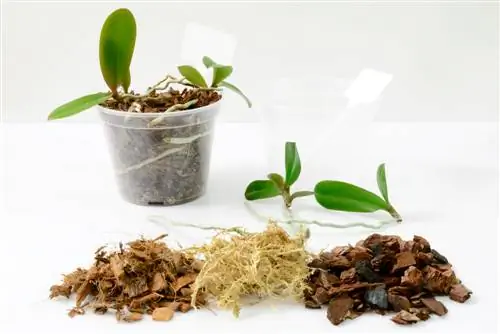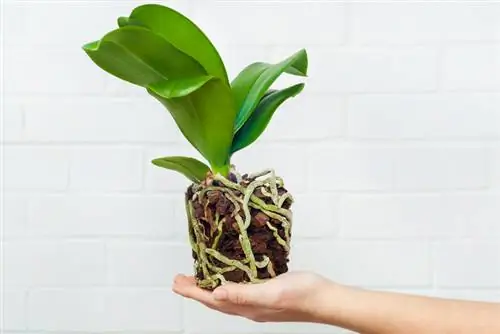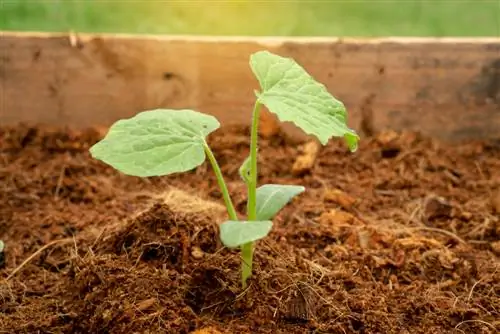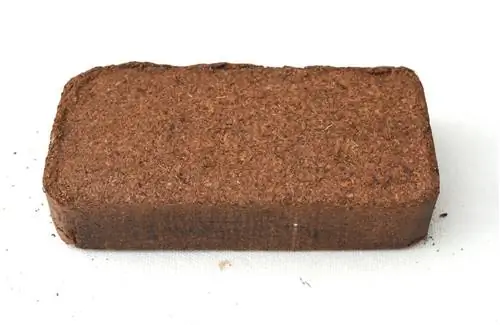- Author admin [email protected].
- Public 2023-12-16 16:46.
- Last modified 2025-01-23 11:22.
If houseplants had a say, coconut soil should not be missing from the potting substrate. Waterlogging, diseases and pest infestations are no longer a threat when coconut fiber shows off its strengths. Read this guide on how to properly use coconut humus for your green and flowering indoor beauties.

How to use coconut soil for houseplants?
Coconut soil is ideal for houseplants by mixing it 1:1 with potting soil. Coconut fibers offer important advantages such as a loose structure for root ventilation, water-holding ability and mold resistance. As an unfertilized natural product, coconut soil must first be enhanced with mineral liquid fertilizer.
Unsuitable as a sole substrate
The term coconut soil is unfortunate because it does not contain soil. In fact, it is just fibers from the coconut shell, pressed into practical and space-saving bricks. Thanks to the following advantages, coconut fiber substrate is on the rise in environmentally conscious plant care:
- Ideal peat substitute for all substrates
- Best water holding ability
- Easy re-humidification, even after complete drying out
- Thermal sterilized and free from all kinds of pathogens
- Perfect root aeration thanks to loose structure
The natural product has no nutrients whatsoever, so it is not suitable as a sole substrate for houseplants. So that green and flowering potted plants can enjoy their convincing properties, coconut humus is fertilized and mixed with potting soil. The following lines reveal how it works.
Natural building stone for potting substrates
By enriching conventional potting soil with coconut soil, you create a premium quality potting substrate. It is important to supplement missing nutrients and find the right mixing ratio. How to do it right:
- Unpack the humus bricks and place them in a bucket
- Mix 4 liters of lukewarm water with mineral liquid fertilizer (€18.00 on Amazon) according to the manufacturer's instructions
- Pour humus bricks over and let them soak for 20 to 60 minutes
- Knead the swelling coconut clay repeatedly with your hands
- Meanwhile, sterilize the moistened potting soil in the oven at 100 degrees for 30 minutes
Mix finished coconut soil and cooled potting soil in a ratio of 1:1. Most houseplants like to stretch out their roots in this mix. Phalaenopsis and other orchids appreciate it when you add a handful of coconut humus as an organic building block for orchid soil. Furthermore, your indoor bonsai will appreciate it if fertilized coconut fibers ensure airy conditions in the limited shell substrate.
Tip
Environmentally conscious hobby gardeners prefer coconut soil as a growing substrate for vegetables and tomatoes. Humus bricks are made solely from renewable raw materials, which offer ideal growing conditions for seedlings. Airy, loose structure, excellent mold resistance and best water storage pave the way from seedling to vital, productive crop.






